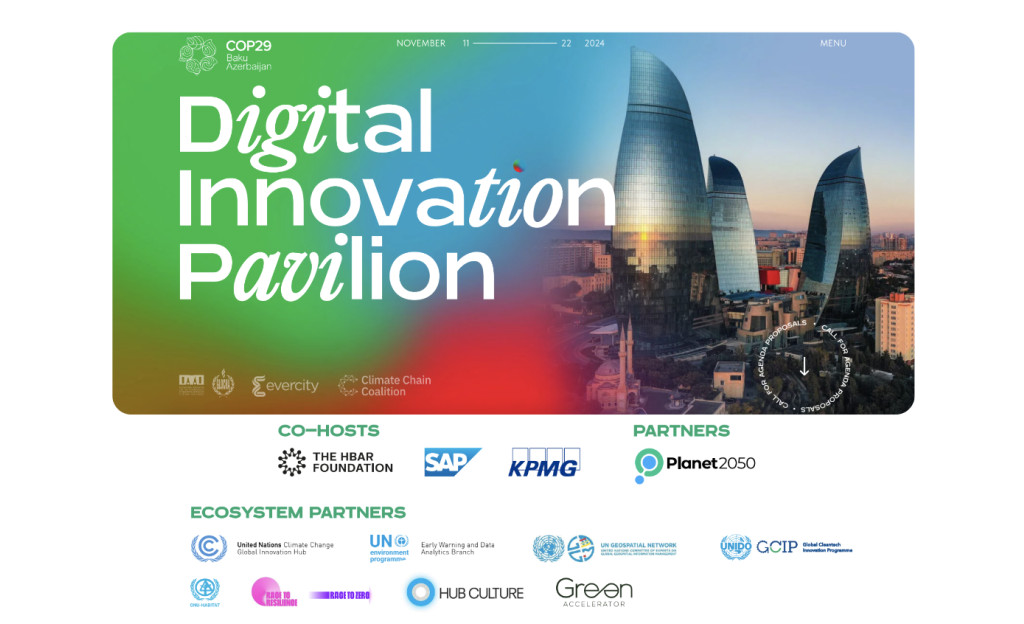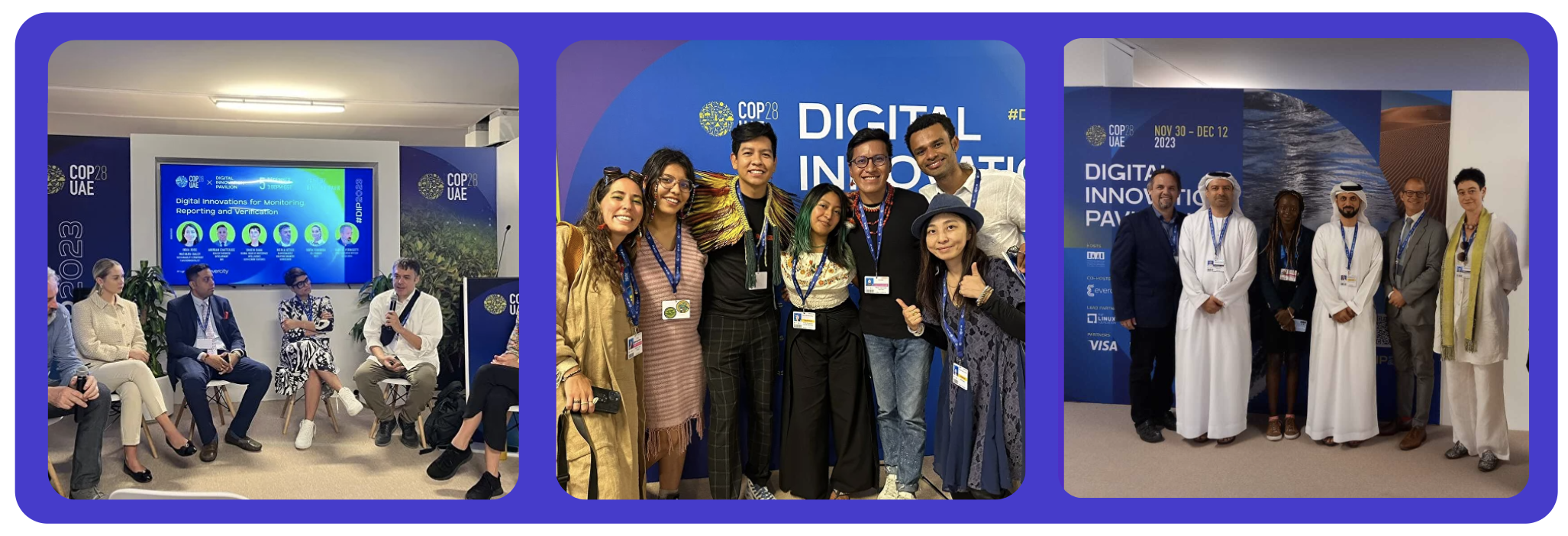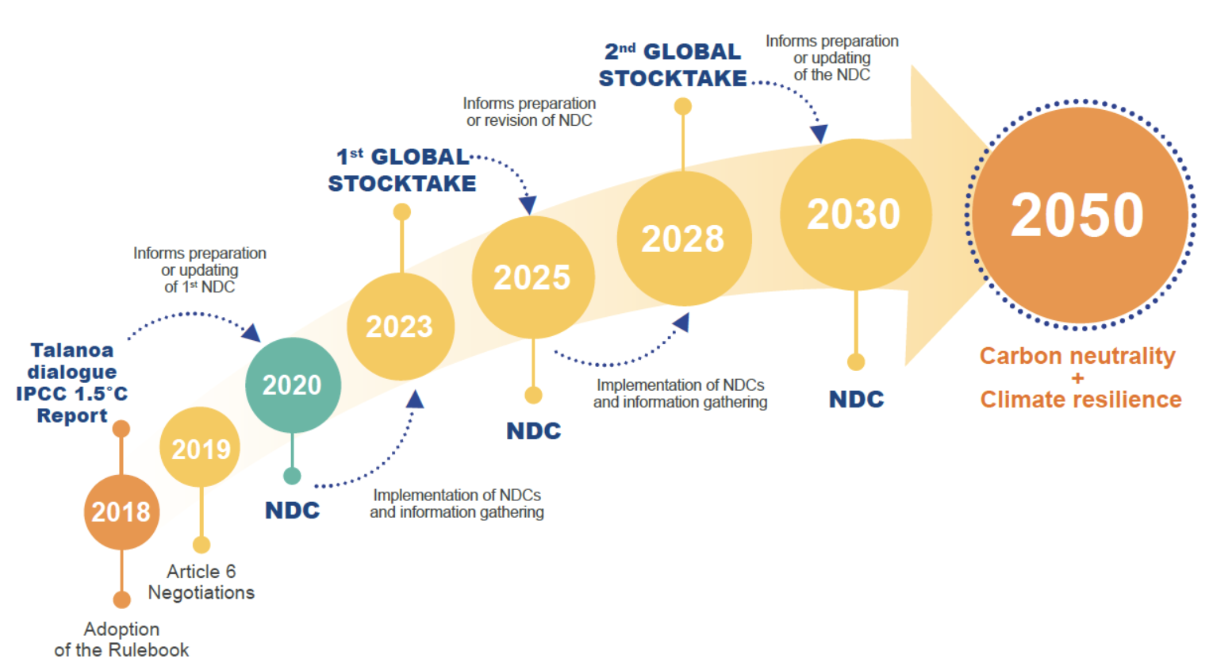Reading Time: 5min

Planet2050 is happy to partner with the Digital Innovation Pavilion (DIP) in the Blue Zone of COP29 taking place in Baku, Azerbaijian on November 11 to 24. How is COP29 relevant for private capital and project developers in the carbon market? Find out more in this post.
The Digital Innovation Pavilion is the key place where digital innovators meet with global climate community to showcase the potential of emerging tech for the implementation of the UN SDGs and the Paris Agreement.
This year's topics will be very broad ranging from Impact Investing, Climate Tech, Energy Transition, Water & Oceans, Africa, Biodiversity, Blockchain & AI, Youth Engagement.
Our CEO Lucas Zaehringer will be present to meet with existing and new international partners, and talk about the work of Planet2050 in the space.

The 29th Conference of the Parties (COP29) to the United Nations Framework Convention on Climate Change (UNFCCC) is set to take place from November 11 to 22, 2024, in Baku, Azerbaijan. This pivotal gathering aims to advance global climate action, with a pronounced emphasis on climate finance, earning it the appellative "Finance COP."
In the lead-up to COP29, the presidencies of COP28, COP29, and COP30—collectively known as the 'Troika'—have urged nations to enhance their climate finance contributions.
Key focal points include operationalizing the Loss and Damage Fund (LDF) established at COP27, setting ambitious new climate finance targets under the New Collective Quantified Goal (NCQG), and mobilizing private finance through increased market participation under Article 6 of the Paris Agreement.
Building upon commitments from COP28, COP29 will address the transition away from fossil fuels and the adoption of outcomes from the Global Stocktake (GST).
The ‘Synthesis report’ underscores the necessity for countries to update and enhance their climate actions and support mechanisms to align with global targets.
As the final COP before the February 2025 deadline for updating Nationally Determined Contributions (NDCs), it presents a critical opportunity to accelerate global adaptation efforts.
Parties will assess progress on National Adaptation Plan (NAP) processes, focusing on implementation and support.
Additionally, Biennial Transparency Reports due by the end of 2024 will provide insights into parties' climate actions and their progress toward Paris Agreement goals.

Source: Drishti The Vision Foundation, ‘COP 28: Charting the Roadmap for Climate Action’, 2023.
Article 6 of the Paris Agreement establishes a framework for international cooperation in reducing emissions as specified in NDCs. It facilitates the trading of carbon credits derived from greenhouse gas emission reductions or removals, aiding countries in meeting their climate objectives.
For the private sector, Article 6 offers substantial opportunities. By participating in carbon credit trading, businesses can achieve emission reduction targets more cost-effectively while supporting global emission reductions. Moreover, Article 6 enables private enterprises to invest in climate projects worldwide, potentially opening new markets and fostering innovation in green technologies.

Source: Climate Focus, 2023 Changes in the generation and use of carbon credits after COP 26 decisions.
There is hope that implementing the UN-backed program under Article 6 could revitalize global carbon markets, which have faced challenges related to credit quality. The key question remains whether Article 6 will enhance standards for carbon credits or merely resuscitate low-quality credits.
With the February 2025 deadline for countries to submit updated NDCs approaching, finalizing Article 6 details is crucial for reducing emissions, enhancing global climate cooperation, and restoring confidence in voluntary carbon markets.
During a recent five-day Pre-COP meeting, the Supervisory Body engaged in intense discussions, setting a direction for the new UN Paris Agreement Crediting Mechanism.
The focus was on two key standards:
Standard on Methodology Requirements: Guidelines for developing and assessing projects under the Paris Agreement Crediting Mechanism.
Standard on Activities Involving Removals: Requirements for projects that remove greenhouse gasses from the atmosphere.
These standards can be updated to keep pace with market developments. They are intended to assist project developers in creating and submitting methodologies for their projects, facilitating registration under the new mechanism.
COP29 is poised to be a transformative event for the carbon market. Private capital and project developers who actively engage with the summit's outcomes can position themselves to capitalize on new opportunities and address emerging challenges. With production and distribution accounting for approximately a quarter of global emissions, managing trade is crucial in addressing the climate crisis, making it a key focus area for COP29.
Encouraging companies to offer environmentally preferable goods, services, and technologies to developing nations can bridge the environmental and green tech gap between developed and developing countries, enabling a transformative response to climate change in less industrialized regions.
Furthermore, integrating environmental metrics into trade agreements and conducting thorough supply chain due diligence can help countries incentivize sustainable practices while penalizing environmental negligence.
COP29 is expected to serve as a platform for discussing and establishing mechanisms to ensure that trade supports, rather than exacerbates, the climate crisis. The EU's bold move for the EU Deforestation Regulation and Carbon Removals and Carbon Farming is emblematic of a new era in international policy. This makes COP29 a pivotal event for the private sector, providing opportunities to shape sustainable trade practices and contribute to global climate goals.
Learn More:
Planet2050's Newsletter